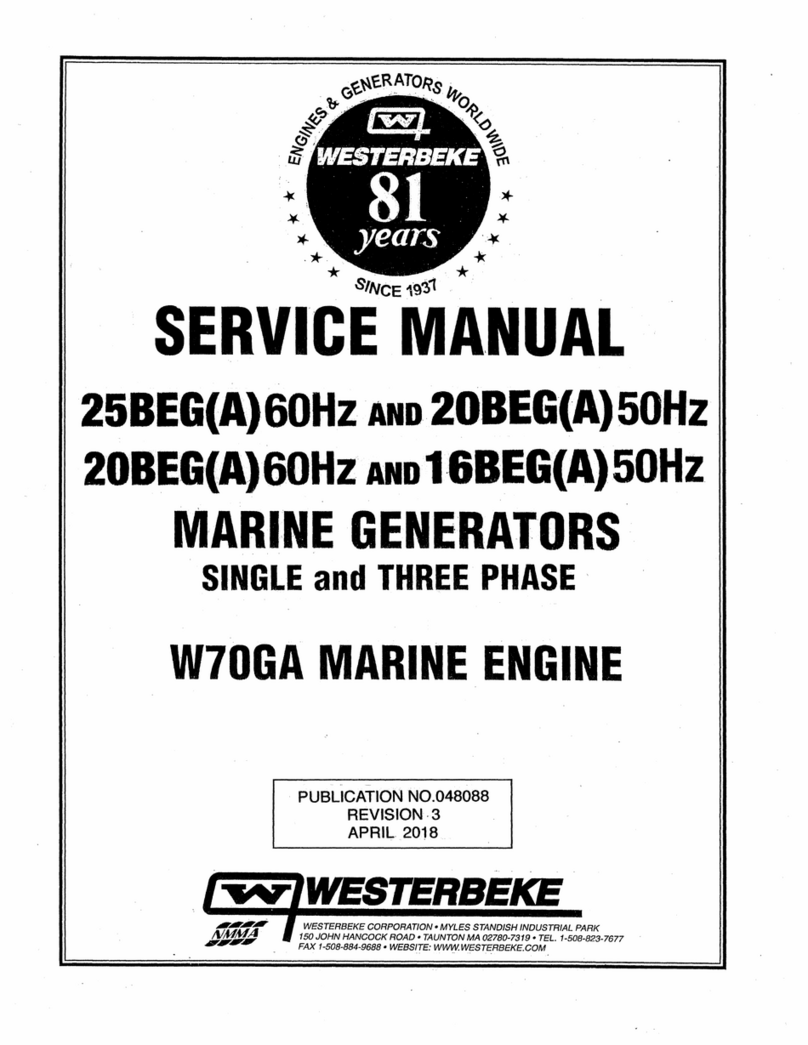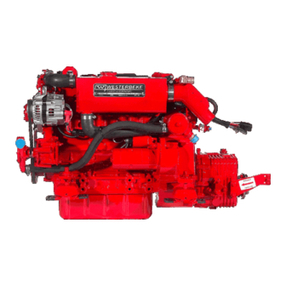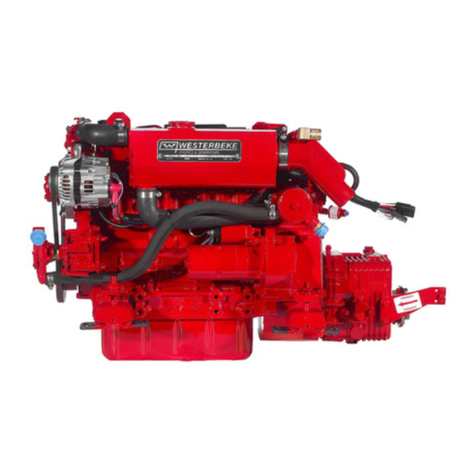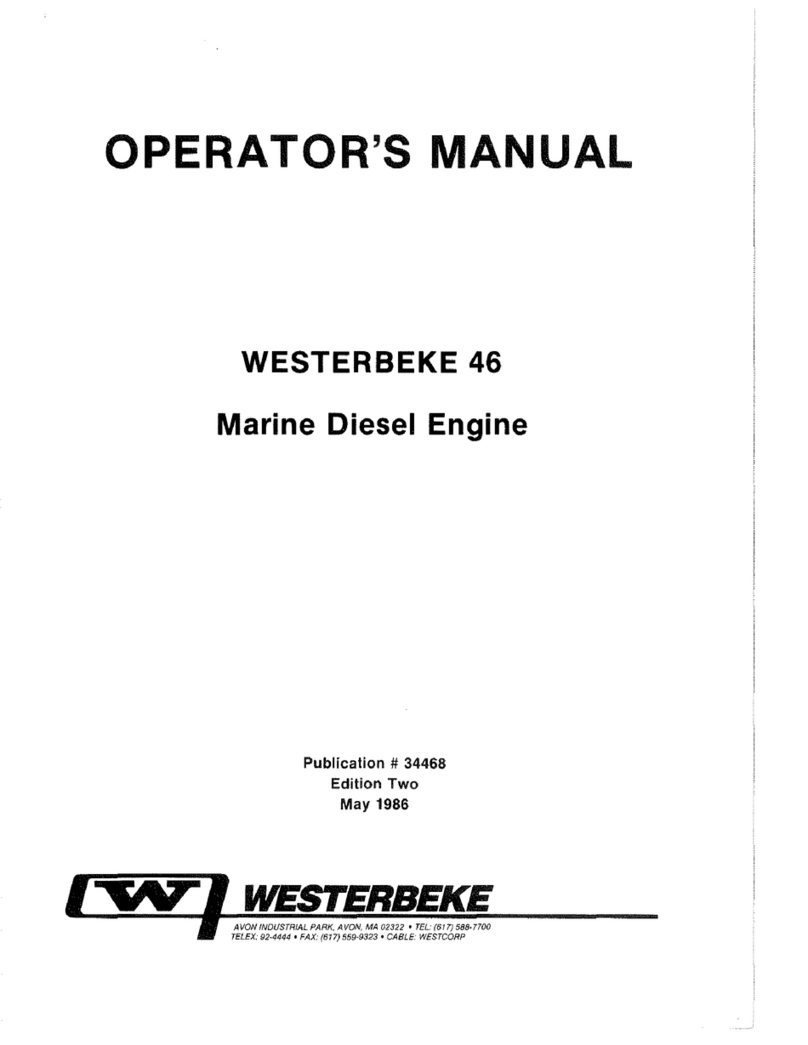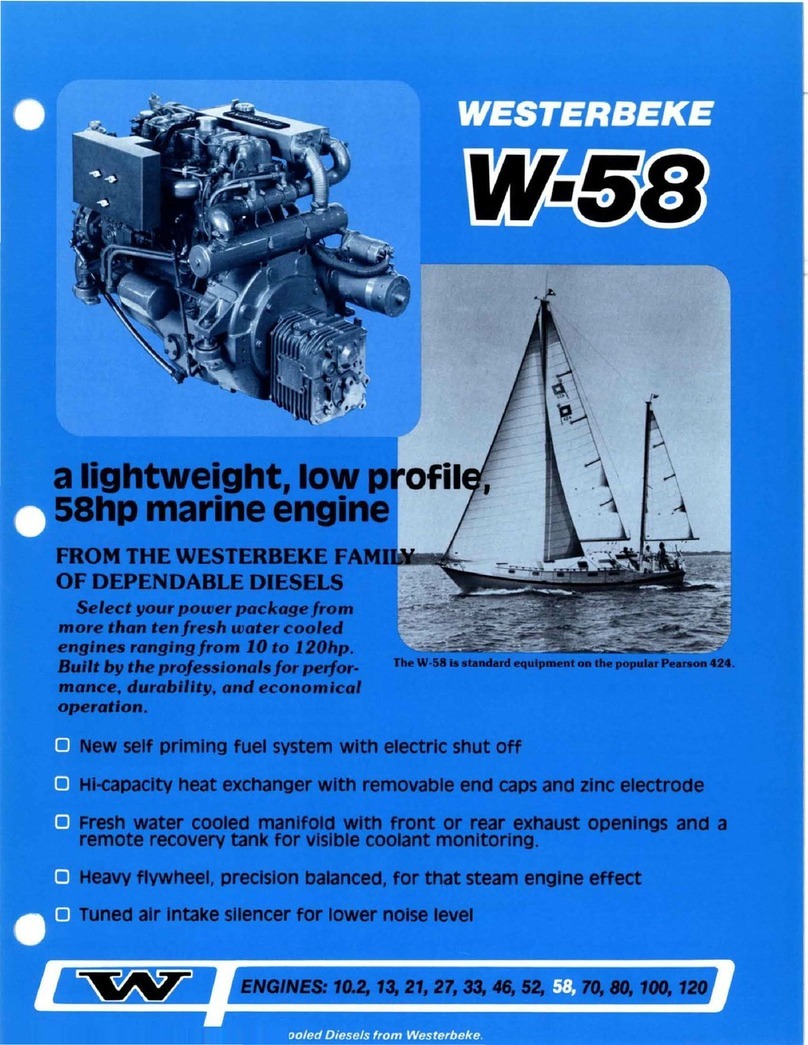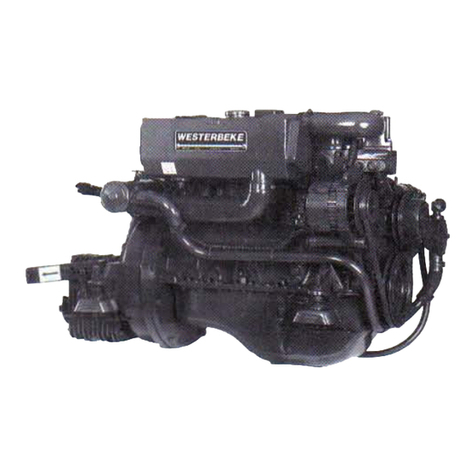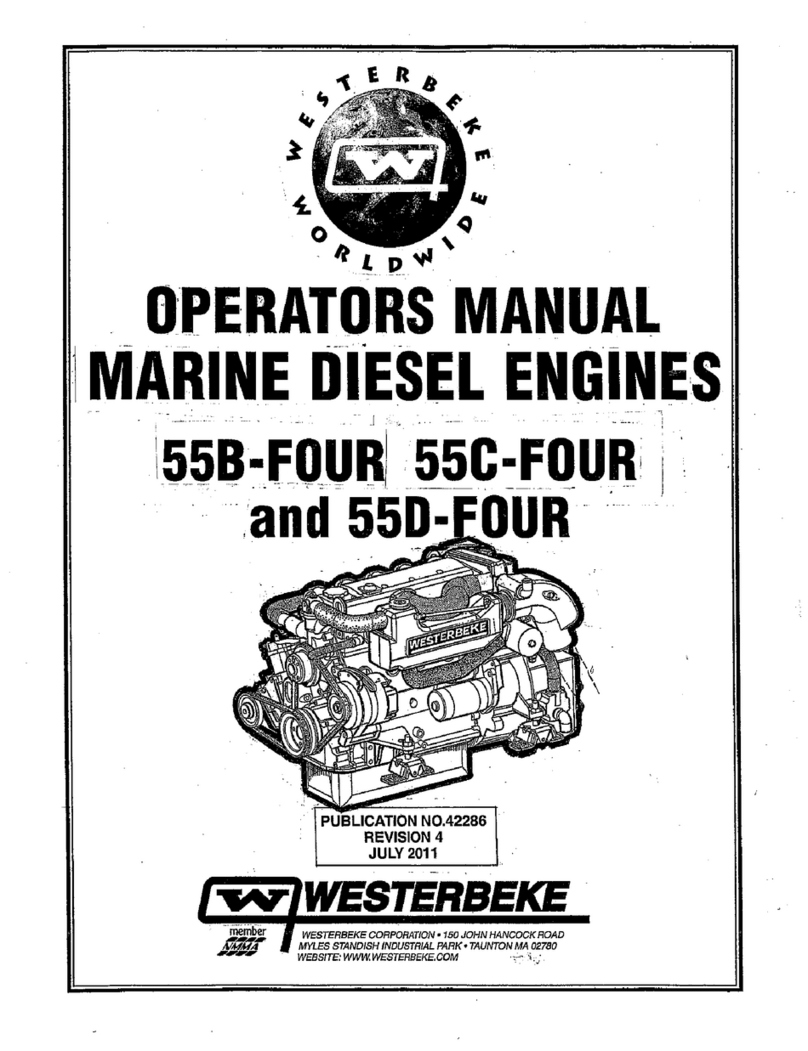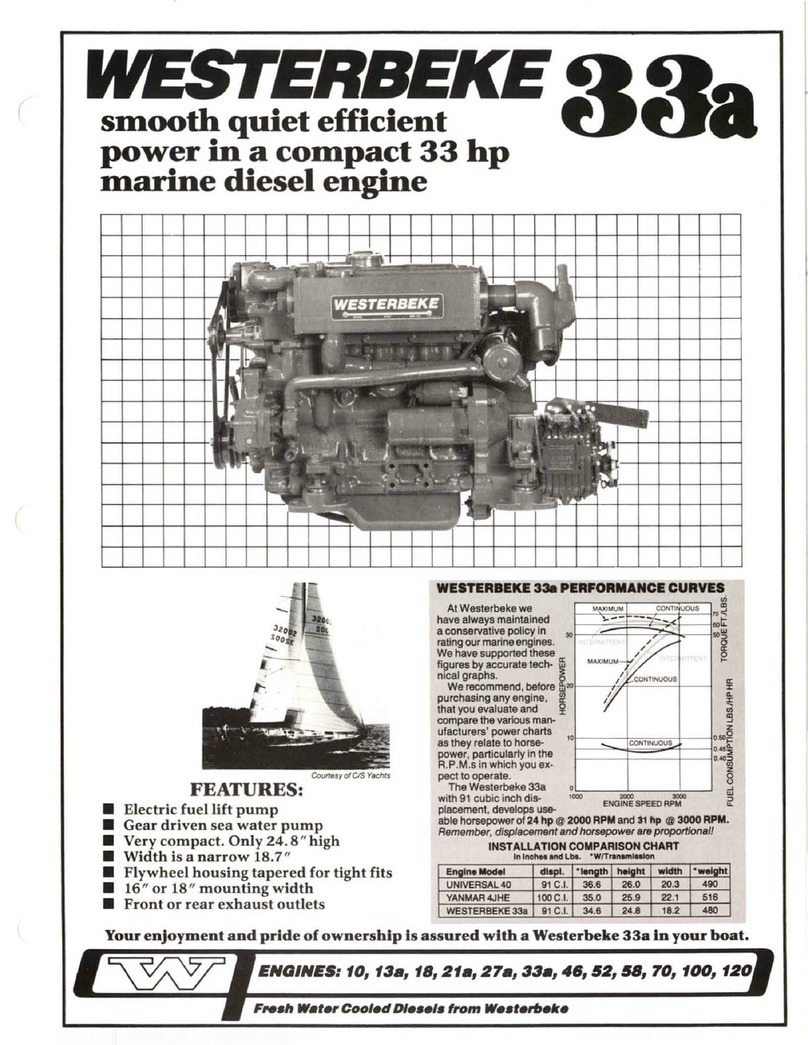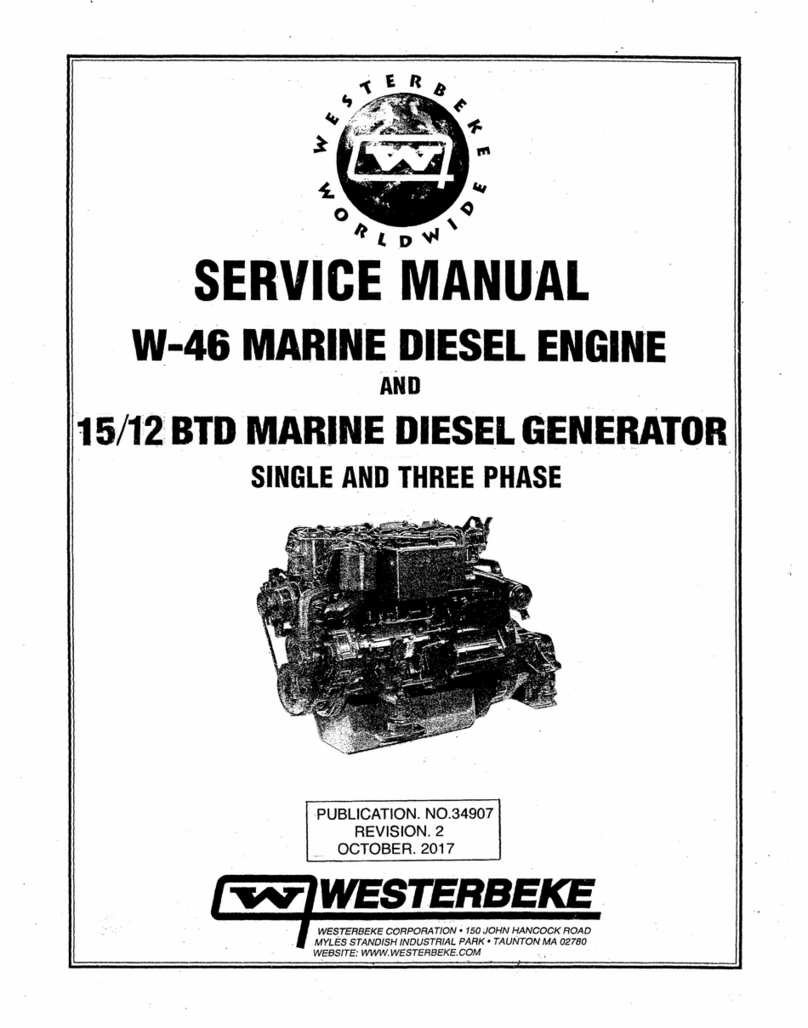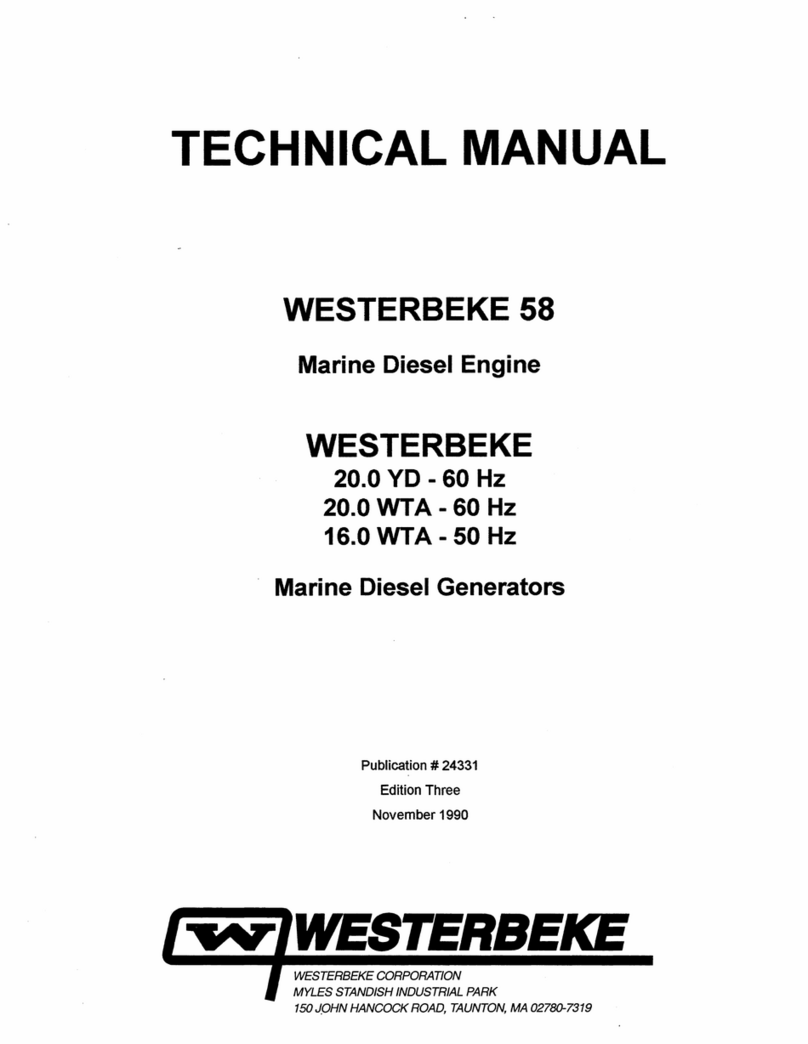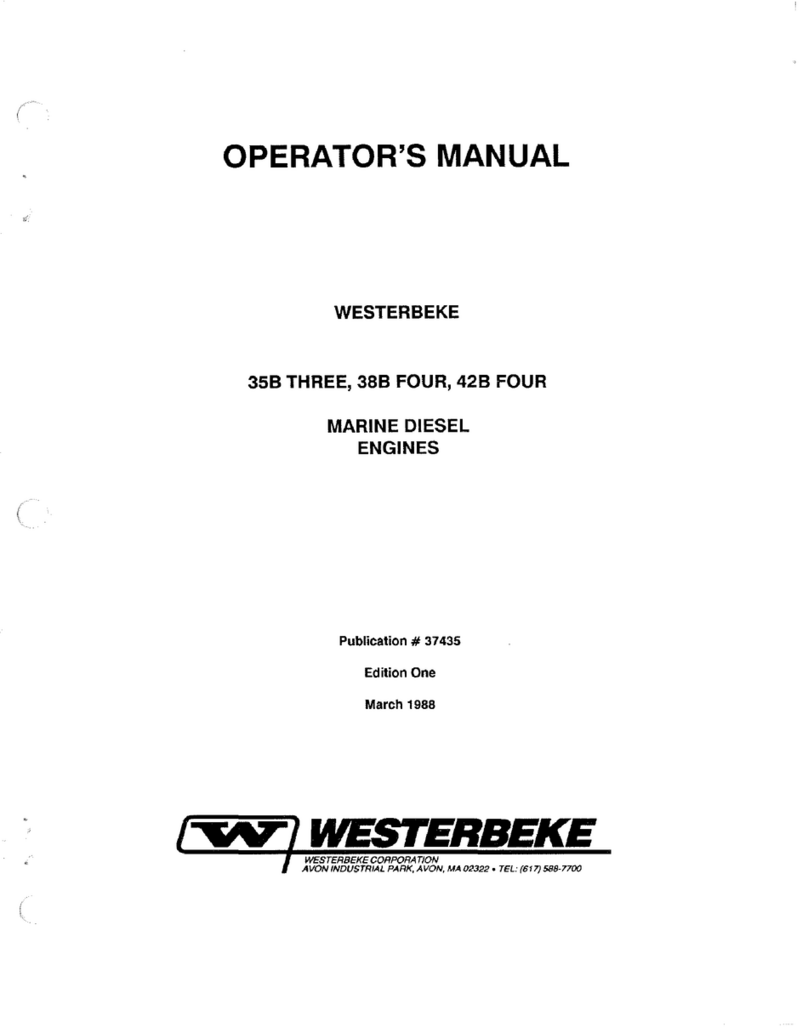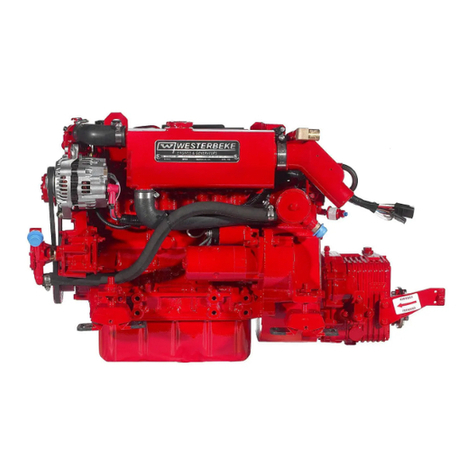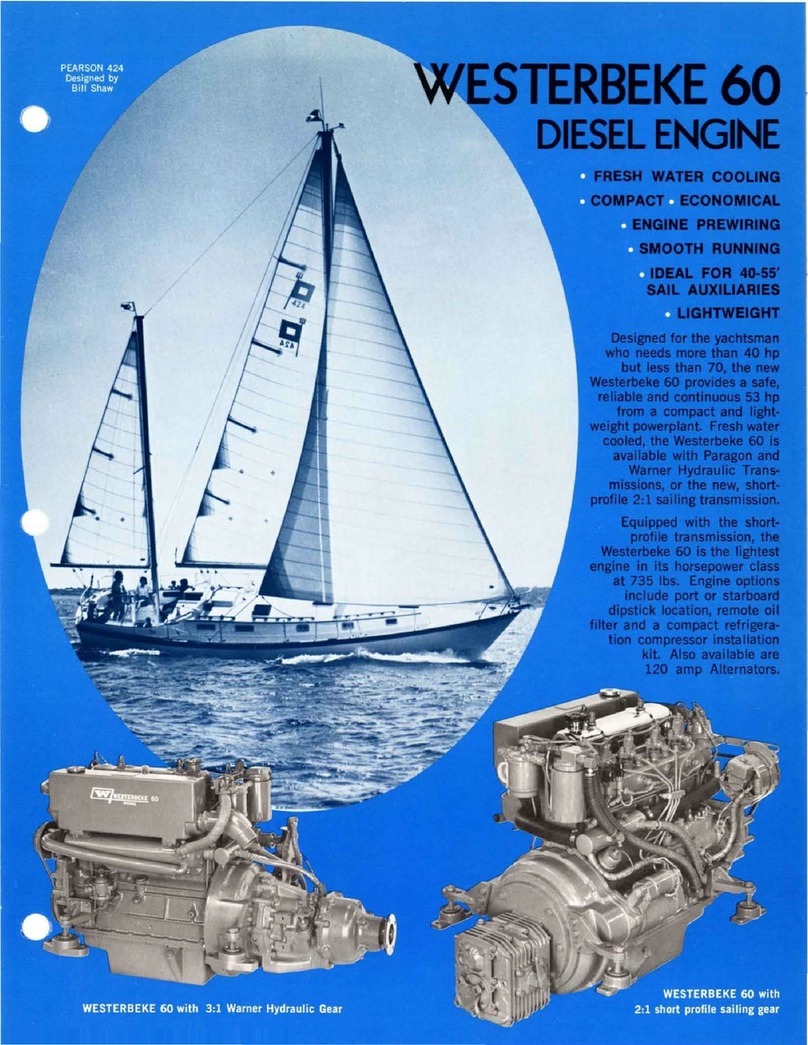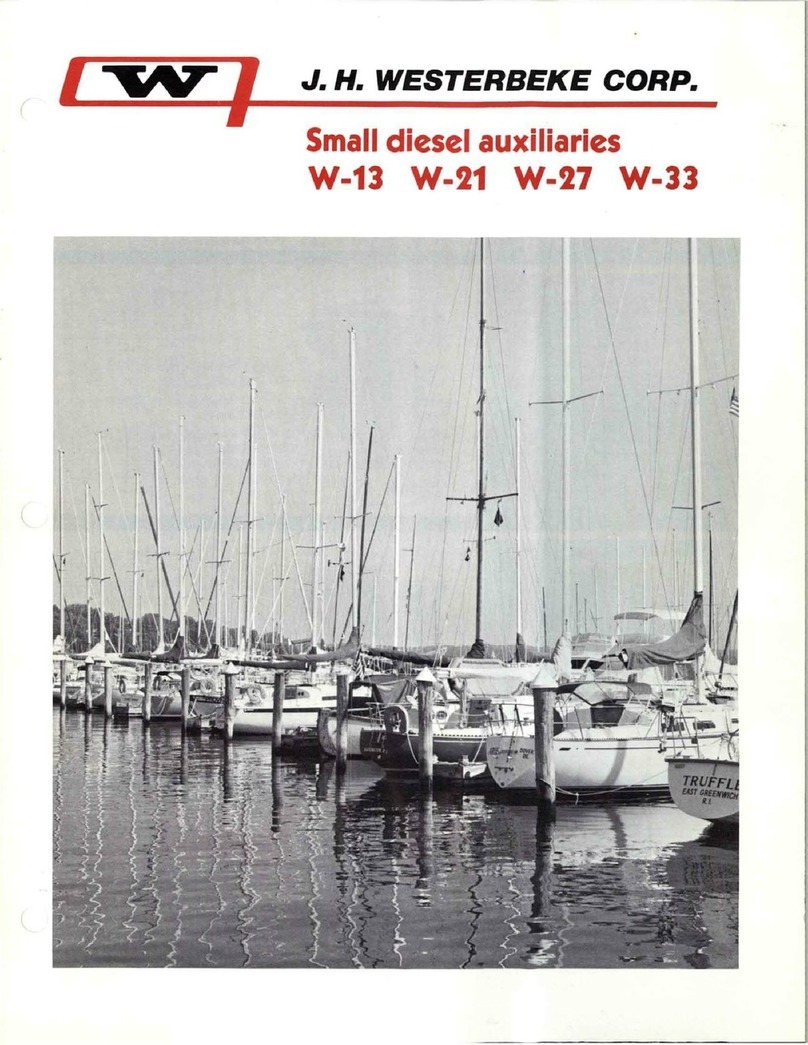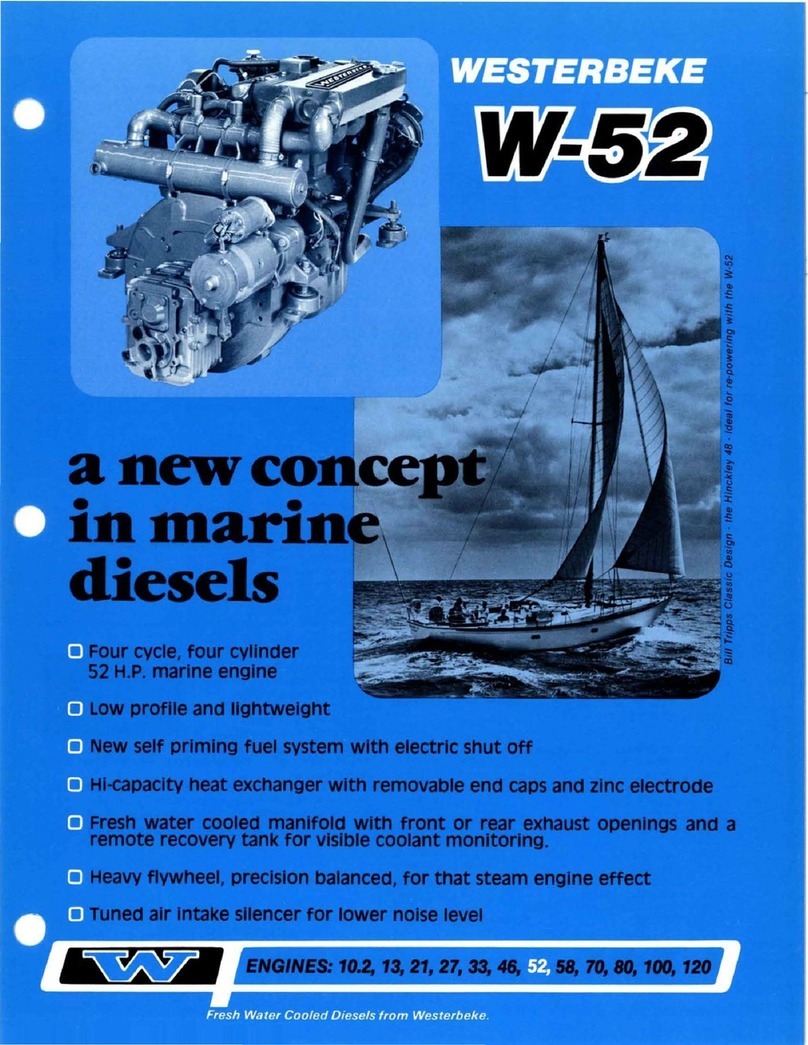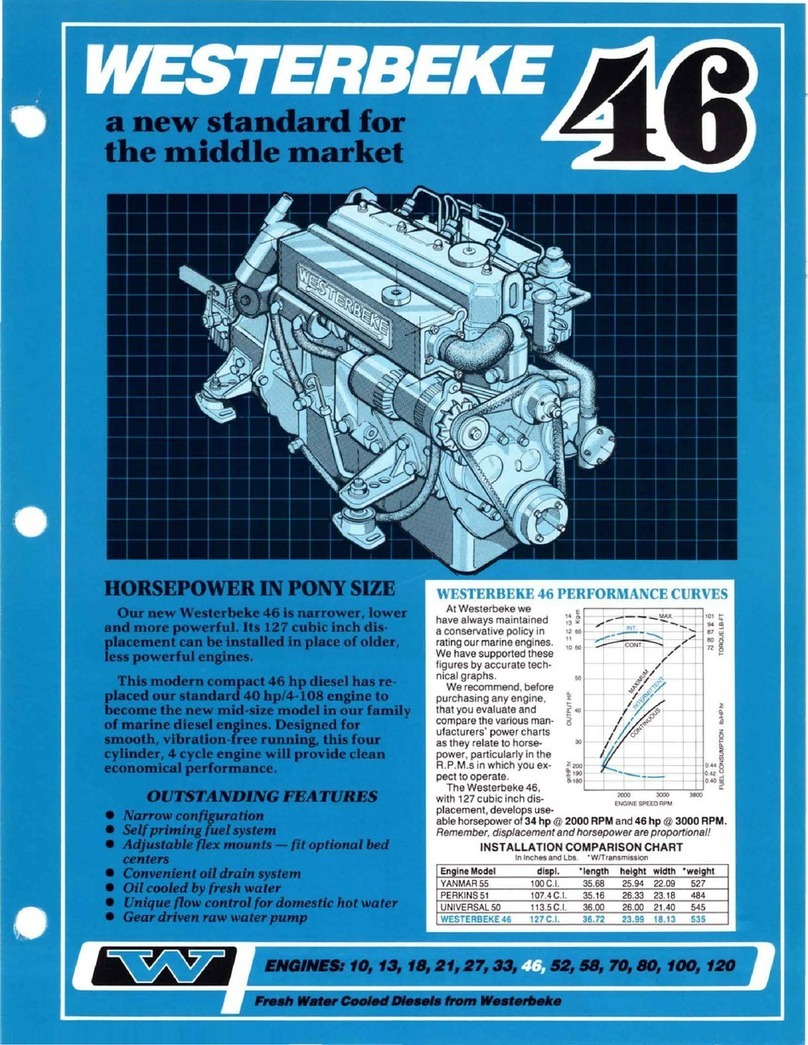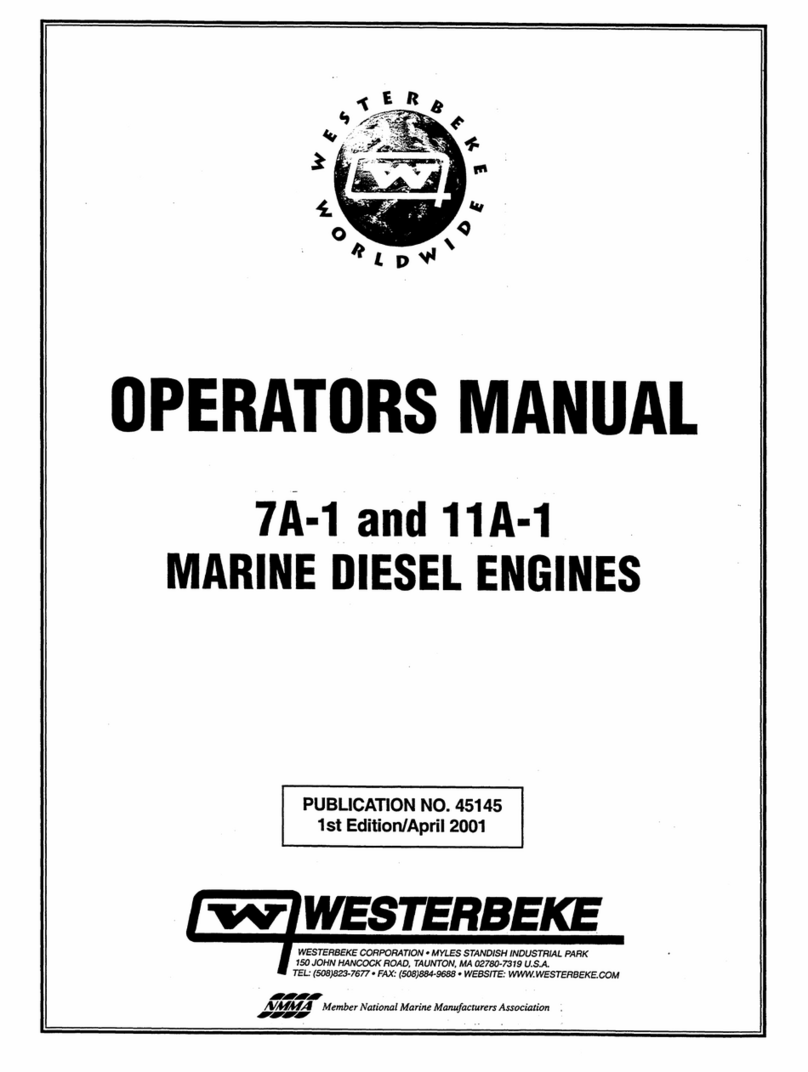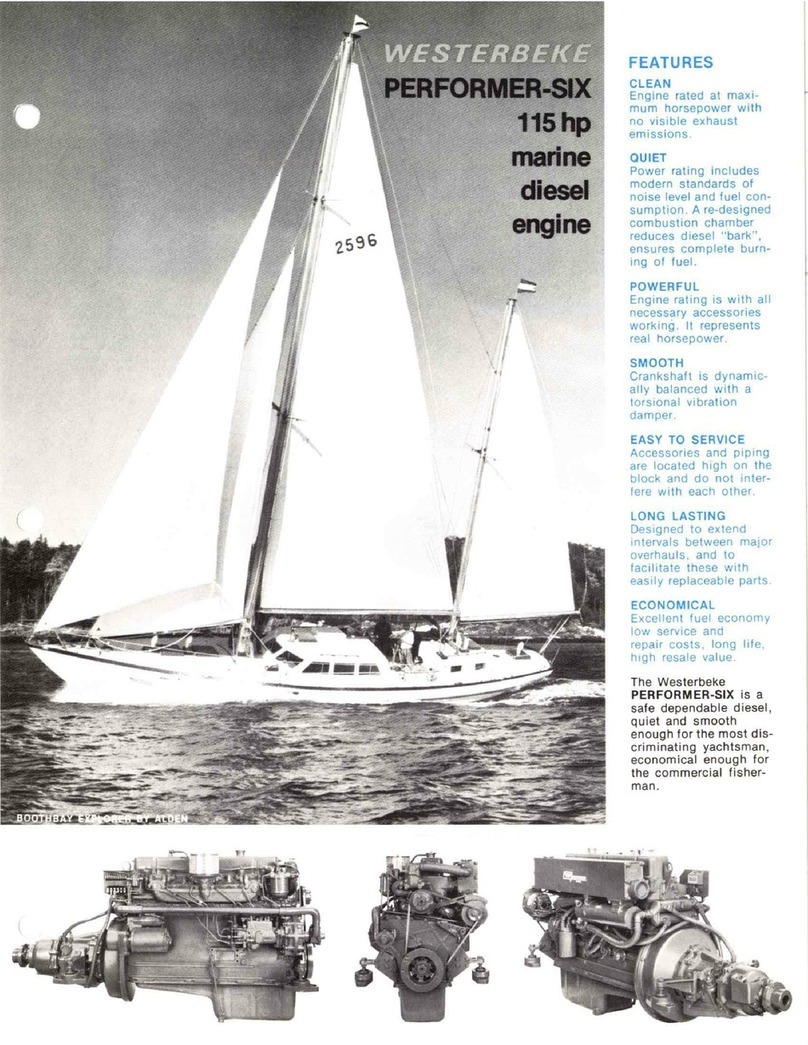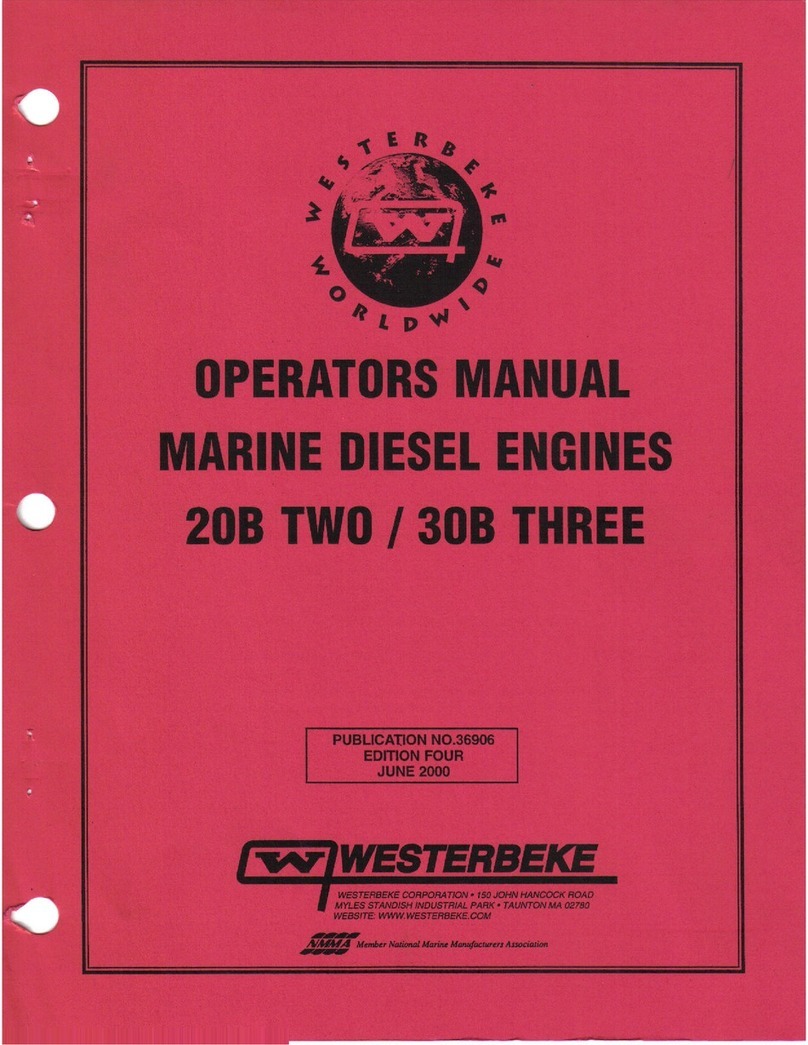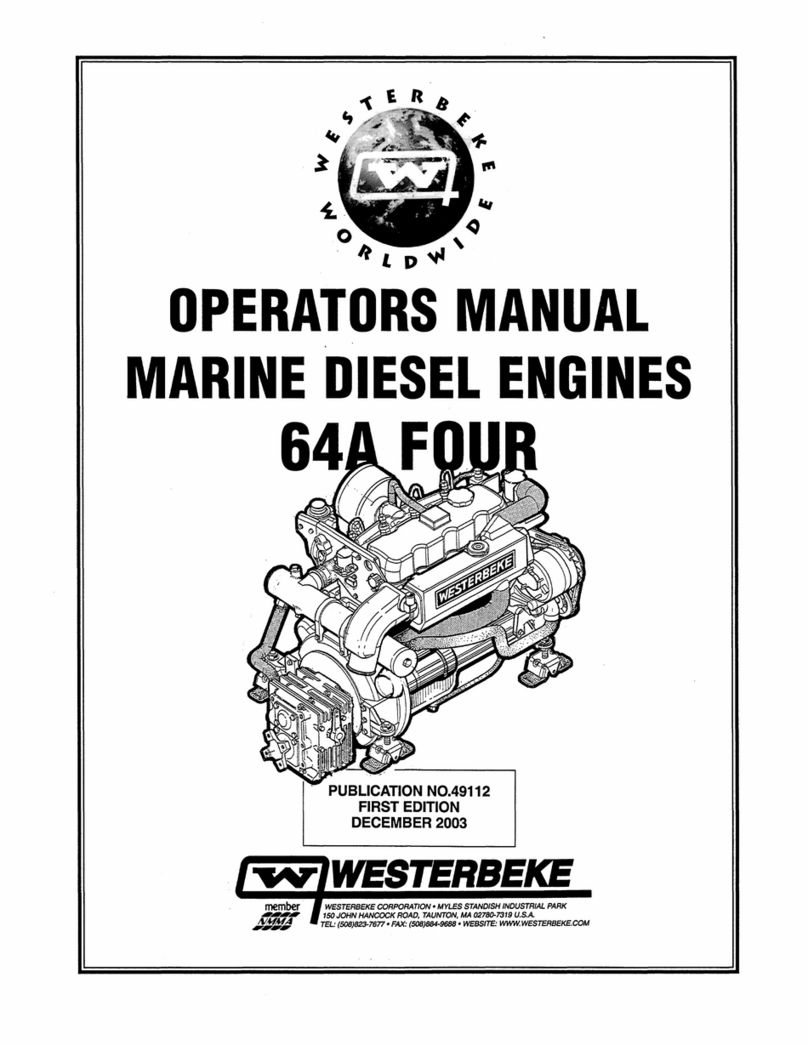
INTRODUCTION
SERIAL
NUMBER
LOCATION
The engine's model designation and serial number are
located
on
a nameplate that is mounted on the side
of
the
waterjacketed exhaust manifold. The engine's serial number
can also be found stamped into the fiat block surface located
just
above the manual shut-offlever. Take the time to enter
this information
on
the illustration
of
the name plate shown
below, as this will provide a quick reference when seeking
technical information and/or ordering parts.
~2£ii#;l=143=t
0 . . 0
•
MODEL
SPEC
AVO•
"'"USA
SER.NO.
•
UNDERSTANDING
THE
DIESEL
ENGINE
The diesel engine closely resembles the gasoline engine,
since the mechanism is essentially the same. The cylinders
are arranged above a closed crankcase. The crankshaft is the
same general type as a gasoline engine, and the diesel engine
has the same type
of
valves, camshaft, pistons, connecting
rods and lubricating system.
Therefore, to a great extent, a diesel engine requires the same
preventive maintenance as a gasoline engine. The most
important factors are proper ventilation and proper mainte-
nance
of
the fuel, lubricating and cooling systems. Fuel and
lubricating filter elements must be replaced at the time peri-
ods specified, and frequent checking for contaminants (water,
sediment, etc.) in the fuel system is also essential. Another
important factor is the consistent use
of
the same brand
of
high detergent diesel lubrication oil designed specifically for
diesel engines.
The diesel engine does differ from the gasoline engine,
however, in its method
of
handling and firing
of
fuel. The
carburetor and ignition systems are replaced by a single
component -the fuel injection pump -which performs the
function
of
both.
CARBON
MONOXIDE
DETECTOR
WESTERBEKE recommends mounting a carbon monoxide
detector in the vessels living quarters.
Carbon
monoxide,
even
in
small amounts, is deadly. ·
The presence
of
carbon monoxide indicated an exhaust leak
from the engine or generator
or
from the exhaust
elbow/exhaust hose,
or
the fumes from a nearby vessel are
entering your boat.
If
carbon monoxide is present, ventilate the area with clean
air and correct the problem immediately!
ORDERING
PARTS
Whenever replacement parts are needed, always provide the
engine model number and serial number as they appear on
the silver and black nameplate located on the manifold. You
must provide us with this information so we may properly
identify your engine. In addition, include a complete part
description and part number for each part needed (see the
separately furnished Parts List). Insist upon WESTERBEKE
packaged parts because willfit
or
generic parts are frequently
not made to the same specifications as original equipment.
SPARES
AND
ACCESSORIES
Certain spares will
be
needed to support and maintain your
WESTERBEKE engine. Your local WESTERBEKE dealer
will assist you in preparing an inventory
of
spare parts. See
the
SPARE
PARTS
page in this manual. For engine acces-
sories, see WESTERBEKE's ACCESSORIES brochure.
INSTALLATION
MANUAL
Publication #43400 provides detailed infoimation for
installing generators.
Engines & Generators
4
